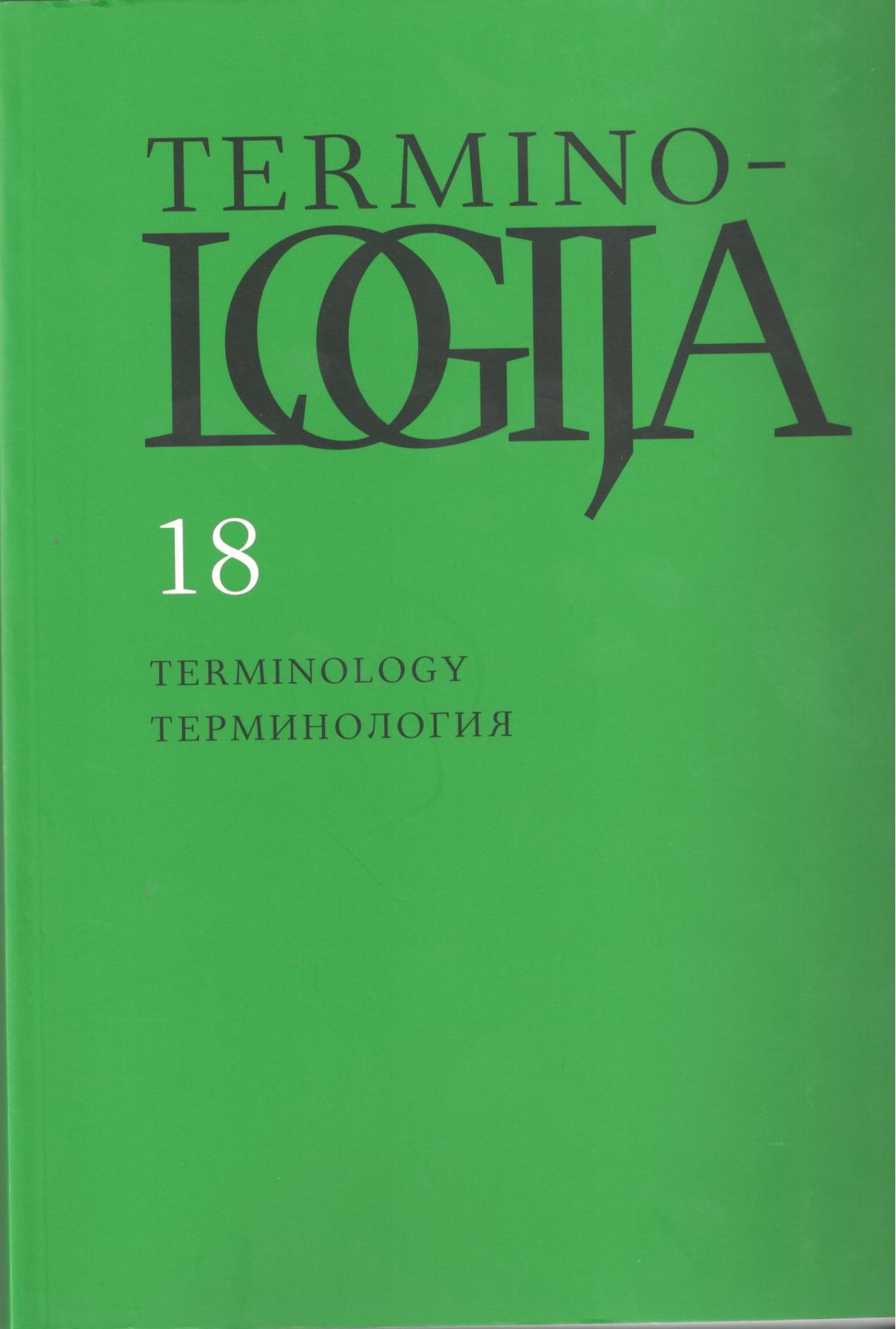Baltijos šalių floros lietuviškų ir latviškų augalų genčių vardų vedyba
Derivation of Lithuanian and Latvian plant genera names in Flora of the Baltic countries
Author(s): Solvita LabanauskienėSubject(s): Language and Literature Studies, Morphology, Lexis, Descriptive linguistics, Baltic Languages, Philology
Published by: Lietuvių Kalbos Institutas
Keywords: names of plant genera; word building; suffixal derivates; ending derivates; prefixal derivates;
Summary/Abstract: This article is a continuation of the article published in the 17th issue of Terminologija. It aims to discuss three groups of derivates naming Lithuanian and Latvian plant genera – suffixal derivates, ending derivates and prefixal derivates – and to establish their similarities and differences. Research source was three volume publication Flora of the Baltic Countries (1993–2003), prepared by teams of authors from Lithuanian, Latvian and Estonian universities and academies of science. It describes plants growing in Lithuania, Latvia and Estonia – cryptogams and phanerogams (excluding moss).Most of Lithuanian and Latvian plant genera names listed in Flora of the Baltic Countries are derivates. The tendencies of plant genera name-formation in the two languages are somewhat different. Compounding is the most productive way of name formation in Latvian, but the second most productive way in Lithuanian.Lithuanian plant genera names are usually made with suffixes. Such names make up 50 % of all formations found. In Latvian botanical nomenclature suffixal derivation is the second most productive way of name formation. 27 % of derivates naming Latvian plant genera were suffixal derivates. The most frequent underlying words of Lithuanian and Latvian plant genera names with suffixes are nouns; adjectives and verbs are less frequent.The largest number of plant genera names in the two languages was made with the same suffix – Lithuanian -enis, -enė and Latvian -enis, -ene. In both languages there are plant genera names made with diminutive suffixes; -ītis, -īte, -iņš, -iņa, -tiņa, -ulis, -ule in Latvian and -utis, -utė, -aitė, -ytė, -(i)ukas, -(i)ukė, -ikė in Lithuanian. Such suffixes are more common in Latvian. A specific characteristic of Latvian suffixation is the usage of two suffixes: -el- + -iņš, -el + -īte or -en- + -īte.Lithuanian botanical nomenclature has a greater variety of suffix derivatives than Latvian. Thirty less productive Lithuanian suffixes and only five Latvian were used to form only one or a few derivates.Hybrid suffix derivates are not characteristic to either language. A couple of hybrid derivates consisting of international root and Lithuanian suffix and only one similar derivate with Latvian suffix were found.Ending derivation is the third most productive way of deriving plant genera names in Lithuanian. 11 % of derived Lithuanian names were made with endings -a, -as, -ė, -is, -ys or -(i)us using nouns, adjectives and verbs. Such derivates make up only 1 % of derived Latvian plant genera names. Their underlying words are nouns or adjectives.Lithuanian and Latvian plant genera names with prefixes in the analysed source are rare (2 % of all Lithuanian derived names and 4 % of Latvian). Lithuanian plant genera names are prefixed with ant-, be-, po- or pro- and Latvian names have prefixes ap-, bez- or pa-. Plant genera names with prefixes in both languages are made only from nouns.
Journal: Terminologija
- Issue Year: 2011
- Issue No: 18
- Page Range: 66-78
- Page Count: 13
- Language: Lithuanian

